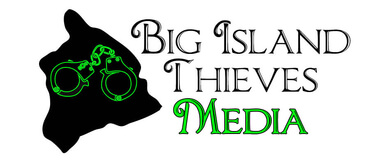(HONOLULU) – Wetland birds on Oʻahu have good reason to be celebrating World Wetlands Day on Tuesday, as wetland habitat at Kawainui marsh on O‘ahuwill soon be improved through a new restoration project.
Funded by the North American Wetlands Conservation Act (NWCA),with matching funds from the DLNR Division of Forestry and Wildlife (DOFAW), this facilitates a partnership with the nonprofit Hui o Koʻolaupoko to create a mosaic of mudflats, open water, and native wetland plants on almost 20 wetland acres.
Amphibious machinery operated by DOFAW staff and hand pulling of invasive weeds by volunteers will improve habitat for endangered wetland birds such as ‘alae ‘ula (Hawaiian Gallinule), ‘alae ke‘oke‘o (Hawaiian Coot) and ae‘o (Hawaiian Stilt).
Kawainui Marsh State Wildlife Sanctuary, Hawai‘i’s largest freshwater wetland, is threatened by overgrowth of invasive plants such as bullrush, cattail, water hyacinth and water lettuce. These plants crowd out areas of open water, reducing native bird habitat. Efforts to remove these plants are set to start in February. The project site is located along the Kawainui Flood Control Levee and adjacent to Kailua Road.
Lindsey Nietmann, a DOFAW wildlife biologist is spearheading the project. “I am thrilled about the visibility and accessibility of this site to the windward O‘ahu community,” said Nietmann. “I hope this restoration effort brings community members closer to the wildlife that shares their Kailua home and provides a feeling of environmental stewardship for volunteers involved in the project.”
Hui o Ko‘olaupoko brings over 13 years of community-based restoration experience to the project, including wetland restoration at He‘eia State Park and a native-plant xeriscape garden at Kawainui Neighborhood Park in Kailua.
“We’re honored to enter into this partnership with DLNR and bring the wetland and bird habitat restoration techniques we have learned at He’eia back to our organization’s hometown,” said Project Director Kristen Nalani Kane. “This will be a very visible and accessible restoration site for all who utilize the levee and we look forward to engaging the community directly with the project, through hands-on, small group experiences.”
“The partnership with Hui o Koʻolaupokois exciting for us at DLNR because it will expand our capacity for restoration,” added Nietmann.“With this project, we are combining DLNR’s use of amphibious machinery with theirability to mobilize groups of community members and remove invasive species that are best controlled by hand.”
The project will continue for two years with support from the NAWCA grant. DLNR will endeavor to secure additionalfunding to continue the effort. The project has received clearance from the DLNR State Historic Preservation Division and the U.S. Fish and Wildlife Service tor all cultural and environmental compliance.



